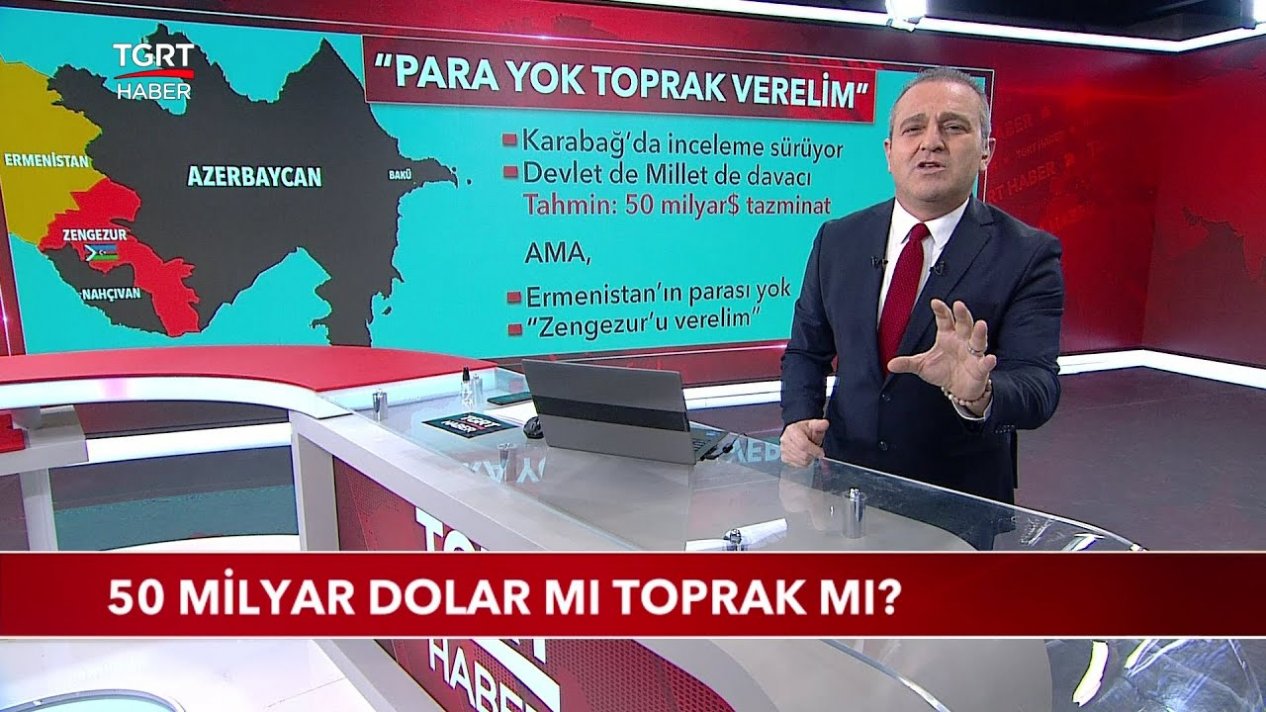
In recent days, there has been a stir in the Armenian media and Ttelegram channels over the payment of compensation by Armenia to Azerbaijan for the damage caused during the occupation of Azerbaijani territories. In particular, it is noted the Turkish state television TGRT has recently aired a program in which the TV anchor says: “Since Armenia doesn’t have the opportunity to pay compensation in the amount of $50 billion to Azerbaijan, in exchange they must give the lands of Zangezur.”

Faktyoxla Lab. has tried to figure out how plausible these statements are and why this issue caused such a stir in the Armenian media.
The program, which the Armenian media write about, was aired on the Turkish TGRT in early December last year. As for the issue of payment of compensation, this topic has been periodically raised by a part of the Armenian establishment practically since the end of hostilities in Karabakh.
For example, back in November last year, former general prosecutor of Armenia, the former representative of Armenia at the European Court of Human Rights Gevorg Kostanyan, made a statement that Armenia would have to pay compensation to Azerbaijan in the amount of $50 billion. He said that the Armenian side undertook a commitment to compensation by signing a trilateral statement on Karabakh between Russia, Azerbaijan and Armenia. He reminded that two years ago, the Azerbaijani side warned the Armenian government that it would file a claim for compensation for material damage to Karabakh and other occupied territories. However, this claim was not filed at that time due to a lack of evidence of Armenia’s responsibility. The former Prosecutor General stated that the prime minister of Armenia signed on November 10 a document confirming that the Republic of Armenia is the subject of the obligation, and thereby assumed responsibility for direct damage. Kostanyan added that recently the president of Azerbaijan has made a statement on the preparation of such a lawsuit against Armenia.
Azerbaijani President Ilham Aliyev also raised the issue of compensation on November 11, 2020 during a meeting with servicemen wounded during the Karabakh war. He said that residential houses, schools, hospitals, public buildings, historical monuments, graves and mosques were destroyed by the Armenians in almost 99% of the territories liberated from the occupation. The president added that groups have already been mobilized to assess the damage, and international experts will be invited. With the participation of international experts, the material and moral damage from all destruction will be calculated, after which the Azerbaijani side will sue Armenia in an international court demanding compensation.

The president of Azerbaijan signed a decree on November 6, 2020, according to which a State Commission was created, which was tasked with assessing the damage caused to the civilian population, state property, including infrastructure, as well as business as a result of the aggression of the Armenian armed forces against Azerbaijan, which began on September 27. The first meeting of the commission was held on November 9 in the Cabinet of Ministers of Azerbaijan. At the meeting, it was decided to fulfill the tasks arising from the order as soon as possible.
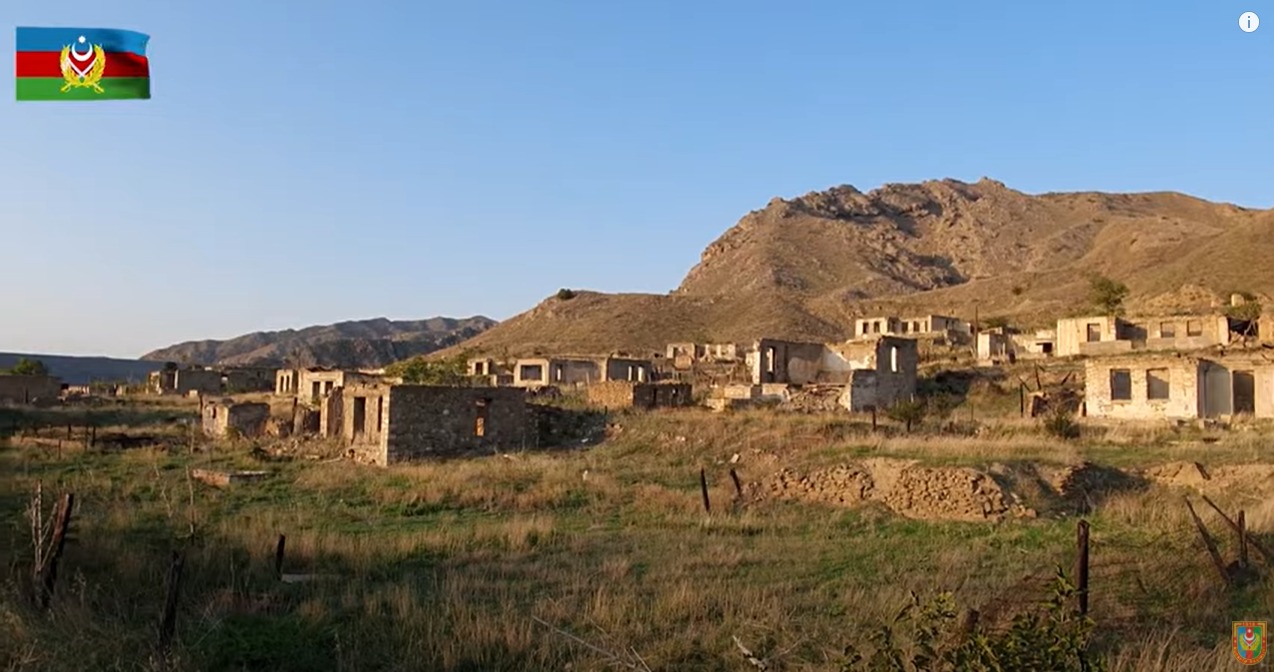
The assessment of the damage caused to Azerbaijan as a result of the Armenian occupation was carried out earlier in 2014. In the course of an investigation conducted by a working group created by the Cabinet of Ministers of Azerbaijan on February 26, 2014, the damage to the population and the state was calculated on the basis of the International Assessment Standards. According to a report published in 2015, the occupation of Azerbaijani lands caused $147.80 billion in damage to the population and $126.46 billion to the state. The working group reported that the country suffered a total of $818.88 billion damage, including damage to natural resources, tangible heritage and other areas.
These figures were also confirmed by the results of a comprehensive forensic examination appointed by the military prosecutor’s office of Azerbaijan. A 2018 report by the military prosecutor’s office says that material damage to Azerbaijan amounted to $818.880 billion.
Also, the assessment, based on materials collected by the Operational Center for Determining the Destructive Impact on the Environment and Natural Resources in the Occupied Territories, covered 22 years. The process, in which experts from the Ministry of Ecology and Natural Resources participated, covered six main areas - looting of mineral deposits, damage to biodiversity, deforestation, land degradation, dispossession, environmental damage to water resources, reservoirs and environmental pollution, as well as moral damage the population. As a result of the study, carried out on a methodological basis in accordance with international standards, the damage to Azerbaijan amounted to $265.281 billion.
The working group also calculated the damage caused to historical and cultural monuments and property. According to its calculations, as a result of the occupation of Karabakh and seven adjacent territories by Armenia, the damage to the historical and cultural monuments of Azerbaijan amounted to $177 billion, and the material damage to the population stood at $55.4 billion.
In short, the facts show that the expected amount of compensation will be much more than $50 billion.
It is also worth noting that there is an international practice when one country uses its right to demand compensation from the occupying country. The topic of compensation arose as a result of the Iraqi invasion of Kuwait in 1990, which subsequently led to the (Persian) Gulf War. Iraqi forces invaded Kuwait on August 2, 1990. As a result of the military operation, which lasted two days, the Kuwaiti army was defeated, the Emir of Kuwait, Sheikh Jaber al-Ahmad al-Jaber al-Sabah, was forced to flee to Saudi Arabia. The territory of the country was occupied by the Iraqi army. The government of Saddam Hussein declared Kuwait the 19th province of Iraq. On August 2, the UN Security Council, by adopting Resolution No. 660, demanded that Iraq leave Kuwait unconditionally. Then a US-led coalition was formed against Iraq.
In February 1991, a coalition of 37 countries led by the US liberated Kuwait from occupation. It is reported that Kuwait was severely destroyed during the hostilities and seven months of occupation. According to open sources, the retreating Iraqi forces burned about 600 oil wells.
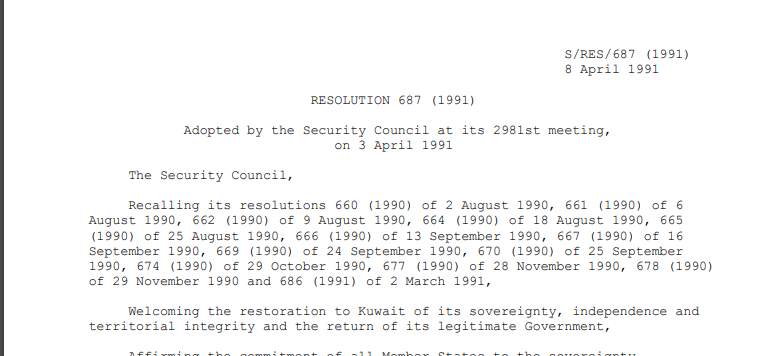
In 1991, under UN Security Council Resolutions 687 (1991) and 692 (1991), a Compensation Commission was established to investigate claims for damage caused to Kuwait as a result of the Iraqi occupation and ensure compensation is paid. The commission received 2.700 million claims from the Kuwaiti side. In general, Kuwait demanded $352.5 billion in compensation from Iraq. 1.500 million claims were satisfied. Investigation, which ended in 2005, estimated compensation at $52.4 billion. Iraq was obliged to pay part of the proceeds from the sale of oil and oil products. Iraq last made a partial payment of $270 million through the UN Compensation Commission on January 27, 2021. To date, only one claim for $2.1 billion remains unpaid. This is a lawsuit filed by the government of Kuwait on behalf of the Kuwait Petroleum Corporation. In 2000, the corporation was awarded compensation in the amount of $14.7 billion in respect of this claim for losses related to the production and sale of oil as a result of damage to Kuwait’s oil fields. This was the largest award by the Commission.
This type of reparations was first introduced following the First World War.
The Versailles Peace Treaty, signed as a result of the defeat in the war with the Entente (the military-political bloc of Russia, the UK and France) of the Triple Alliance (the military-political bloc of Germany, Austria-Hungary and Italy) obliged Germany to pay compensation to the victorious countries for the damage caused. The compensation cost amounted to 269 billion gold marks - about 100,000 tons in gold equivalent. The German government postponed payments at various times due to economic difficulties.
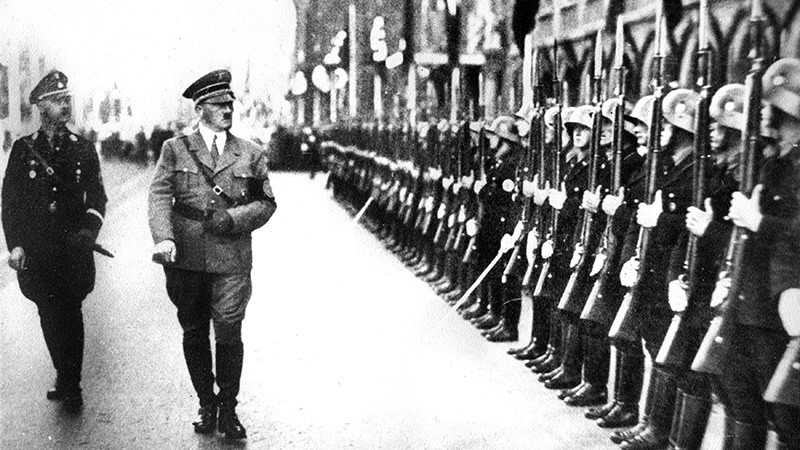
After the Nazis came to power in 1933, Hitler stopped paying altogether. However, after World War II and the creation of the Federal Republic of Germany in 1949, the issue was raised again. By 1953, Germany had paid about 800 million marks in compensation.
With the reunification of Germany on October 3, 1990, the commitments of the Versailles Peace Treaty became valid again. Germany was given 20 years to pay off the debt. During this time, the country was to receive a loan in the amount of 239.4 billion marks. Thus, on October 4, 2010, the Federal Bank of Germany made full compensation payments and thereby fulfilled its obligations.

Another military compensation was assigned to Finland as a result of the war of the USSR. During the ceasefire negotiations held in September 1944 in Moscow, the USSR demanded reparations from Finland in the amount of $600 million. However, subsequently, Finland was required to supply the USSR with goods worth $300 million within six years. In 1944, as a result of a series of December meetings between Prime Minister of Finland Juho Kusti Paasikivi and Chairman of the Union Control Commission Andrei Zhdanov in Helsinki, the period of reparations increased to eight years, and in 1948 the USSR agreed to reduce the volume of reparations to $226.5 million.
As compensation, Finland, which supplied materials for various purposes to the USSR, had to transfer 2/3 of its fleet to the Soviet Union as well. Also, this country built ships for the USSR for $66 million. In 1945, compensation payments accounted for about 21 percent of government spending in Finland, in 1950 - about 10 percent. Finland made the last payment to the USSR in September 1952.
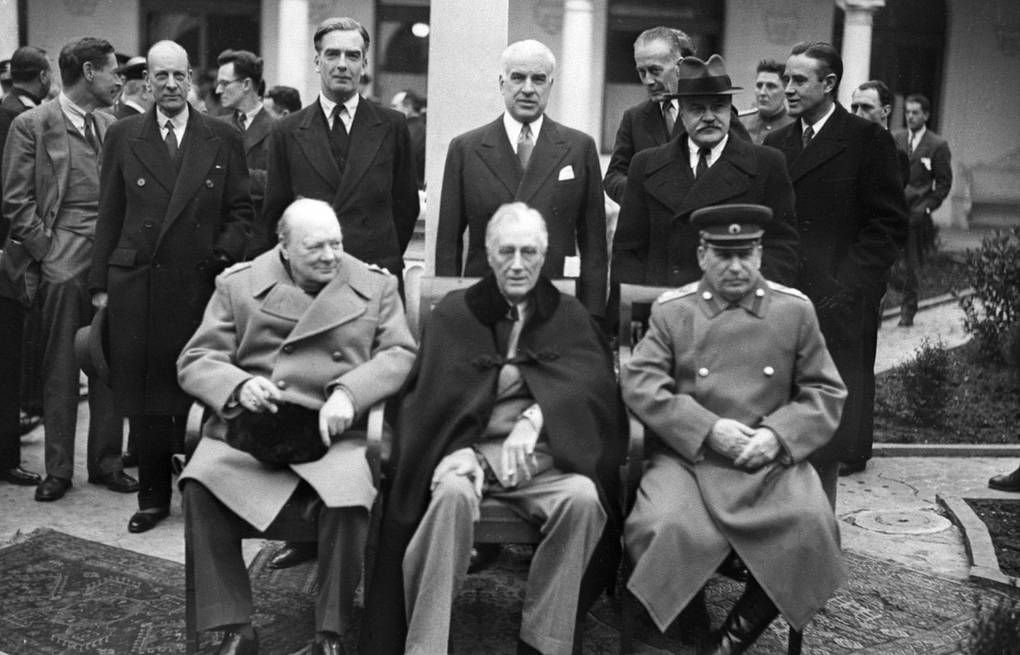
Another example of war reparations is payments for damages caused by Germany and its allies during the Second World War. These forms of compensation were determined at the Yalta Conference in 1945. According to the data of the Main Directorate of Extraction of the USSR for 1990, in response to the USSR’s demands for compensation, Germany transferred 400,000 railway cars to the Soviet Union, including 72,000 cars, 2,885 factories, 96 power plants, 340,000 machine tools, 200,000 electric motors, 1.335 million head of cattle, 2.3 million tons of grain, one million tons of potatoes and vegetables, half a million tons of butter and sugar, 20 million liters of alcohol and 16 tons of tobacco. In addition, telescopes of the Humboldt University observatory, Berlin subway railcars and cruise liners were sent to the USSR. Also, the compressor plant built in 1950 in Krasnodar had equipment supplied from Germany.
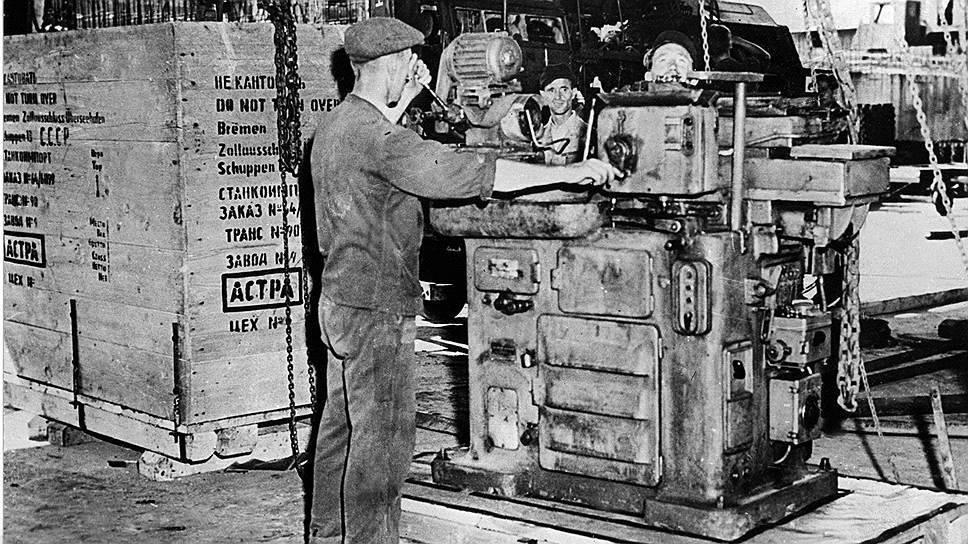
According to statistics from the Polish Institute of International Affairs released in 2005, Germany paid compensation to the USSR in the amount of $3.081 billion at the 1938 exchange rate. $228 million of this amount, about 7.5 percent, fell to Poland. Poland has not yet officially filed a lawsuit, but announced in 2019 that it would demand $900 billion from Germany in compensation for damage done to Warsaw.
As a result of the Potsdam Conference in August 1945, the US, the UK and other countries damaged by the Nazis received compensation from West Germany. According to publicly available data, the USSR, the US, the UK and France removed from West Germany equipment worth $1.2 billion, 277 tons of gold (worth about $300 million), ships worth $200 million. These countries also gained control of about $4 billion of foreign assets in Germany (checks, bills of exchange, etc.). The value of German patents and technical documents confiscated by the US and the UK is estimated at about $5 billion.
Also, according to the Luxembourg Agreement, signed between Germany and Israel in September 1952, Germany paid compensation to Jews who suffered during the Holocaust in the amount of 7 billion euros.
The Greeks also received reparations for the damage inflicted by Nazi Germany. Under an agreement signed in 1960, Germany paid Greece 115 million marks (59 million euros) in compensation. The Greek side is demanding compensation from Germany in the amount of $3.5 billion at the rate of 1938 (54 billion euros at the current rate). In 1961, an agreement on compensation for victims of Nazism was concluded between Germany and Italy. Under the agreement, Germany paid the Italian government 40 million marks (about 20 million euros).
Another example is compensation for damage suffered by Indonesia as a result of the Japanese occupation. As a result of the peace treaty signed on January 20, 1958, Japan pledged to pay Indonesia $223 million over 12 years.
Based on the above-mentioned facts, it is safe to conclude that, firstly, Azerbaijan’s claims to Armenia for compensation for damage are justified, and, secondly, with such fake news the Armenian opposition is trying to aggravate the already difficult situation in the country, raising the topic of “compensation and Zangezur.”




















